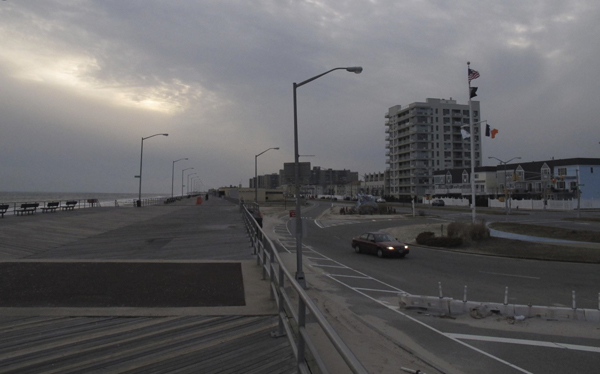
Photo by: Alexander Tucciarone
Councilman Eric Ulrich decided to focus the $1 million he set aside for the participatory budget project on Broad Channel and the Rockaways, two distant neighborhoods that have been neglected in the past.
When John McCann walks by the median at 115th Street and Beach Channel Drive in Rockaway, he sees more than another vacant space. The television producer instead pictures a series of sculptures commemorating the Native Americans that once lived on this Queens peninsula. Thanks to the participatory budgeting process, he may be able to make this vision a reality.
City Councilman Eric Ulrich is one of four councilmembers using a participatory budgeting process this year to distribute $1 million from his pool of discretionary capital funding. Unlike his colleagues, Ulrich has opened the voting only to a section of his district, Rockaway and Broad Channel.
McCann readily concedes the limits of what $1 million can accomplish on its own. That doesn’t stop him from hoping the funds will go towards beautifying Rockaway.
“You go to Manhattan and there’s artwork everywhere,” McCann says. “They should really bring the smorgasbord of art displays to Queens.”
A focused effort
In late March, voters in Rockaway and Broad Channel can vote on which capital projects will make the final ballot. Projects under consideration range from improving Yacht Club Road to creating free public parking at Rockaway Park. Ulrich decided to give participatory budgeting a test-drive in one section of his constituency because he thought this would best help them determine the strengths and weakness of the process before going district wide.
Bart Haggerty, Ulrich’s chief of staff, believes that focus can help fix a history of the city ignoring this part of Queens.
“There’s a sense on the part of some that this neighborhood is cut off from what’s going on,” Haggerty says. “This process gives Rockaway a voice in the city’s budgeting.”
“The Councilman was drawn by the notion that this is the people’s money that we’re spending,” Haggerty adds. “The people who live in the community know it best.”
Rick Horan, vice president of the Rockaway Civic Association, has been involved with this process since it began.
“We should all give Eric Ulrich a pat on the back and hope this continues,” Horan says. “This has made people talk about issues more than they had in the past, where there was really no communication.”
Horan thinks that installing smart lights that gauge the flow of traffic at busy intersections could be a boost to the quality of life in Rockaway. But a focus of his effort has been to remove a portion of the Jamaica Bay retaining wall between the corners of 125th and 130th Street. This stretch is not as close to the water as other parts of the wall and serves less of a practical purpose.
“They’ve got us walled off like East Germany. We need to rip down this eye sore,” Horan said. “Change it from being a barrier to being a corridor.”
About more than money
Noreen Ellis, president of the Rockaway Civic Association, has also been leading the push to get more voters tuned into this new process. She thinks it has the potential to change political life in this part of Queens.
“In these times when people have less than 100 percent confidence in the political system, this process is really opening doors,” Ellis says.
Ellis thinks that the winning projects should focus on keeping the beaches and parks clean. However, leading strong voter turnout is a bigger priority for her.
“I’m not singling out any specific projects,” she says. “I see myself more as a facilitator of broader engagement.”
Marguerite Kazalski, a bookkeeper and mother of two, was not involved in the neighborhood assemblies that first began proposing capital projects. A lifelong Rockaway resident, she does have some ideas about how the money should be invested.
“When you go out to Long Island and New Jersey, you see playgrounds at the beach,” Kazalski says. “Something like that would be a real improvement.”
She also has thoughts about the Jamaica Bay retaining wall, but would rather beautify it than tear it down.
“The murals on the bay wall that some people have already done are beautiful, very decorative and they should do more of that,” she says. “It’s much nicer than a concrete wall.”
Kazalski thinks the focus should be on beautifying the area by planting community gardens in fallow lots, installing more benches and developing parks close to the beach.
“Why not spend the money on a place to sit that’s not on the beach?” she says. “Some people just don’t like sand.”








